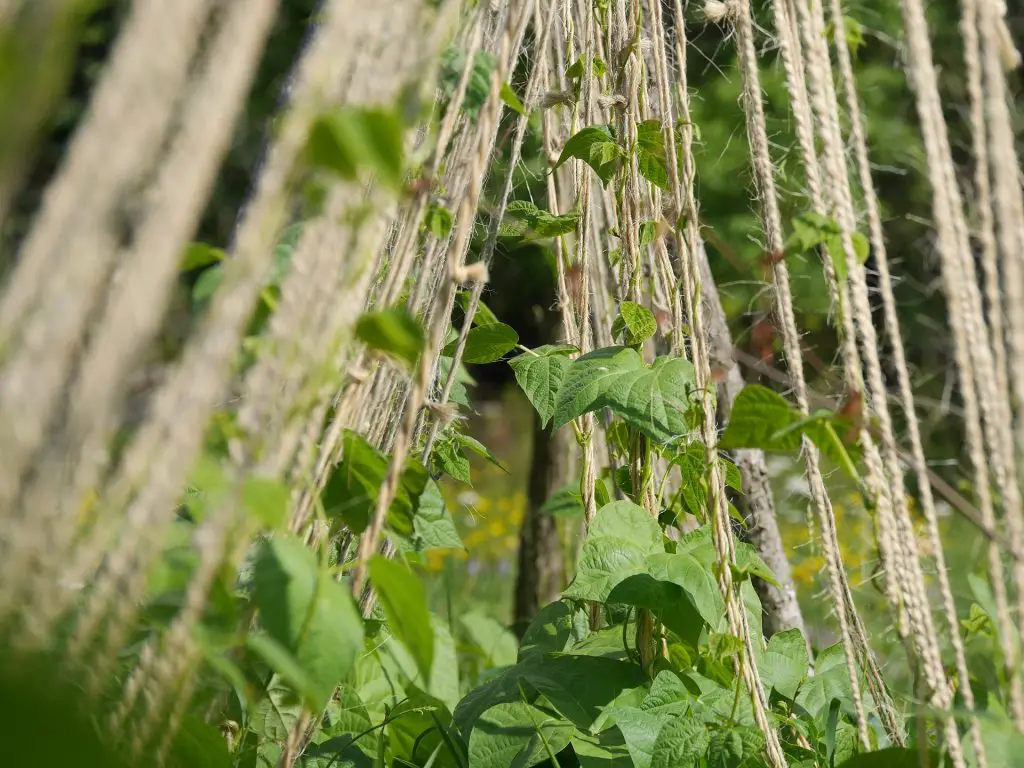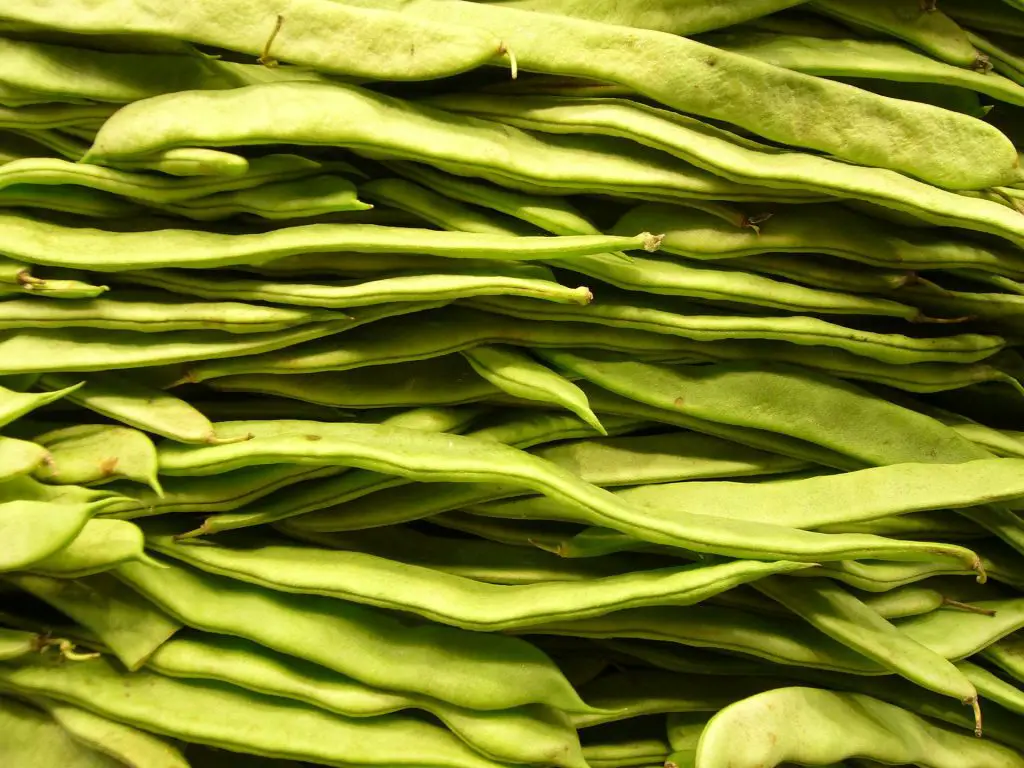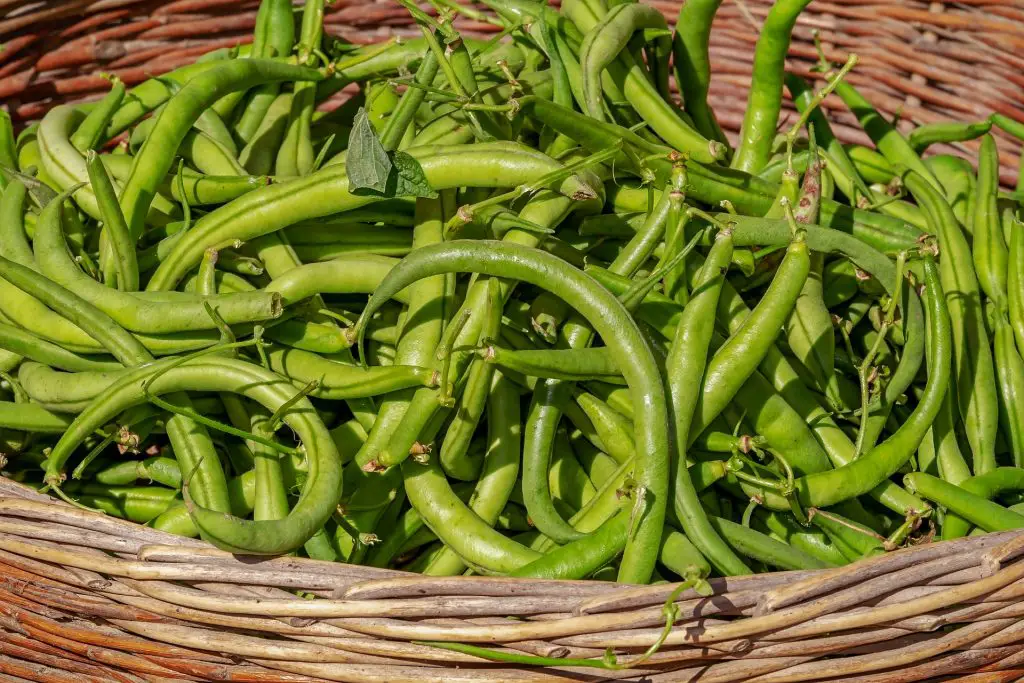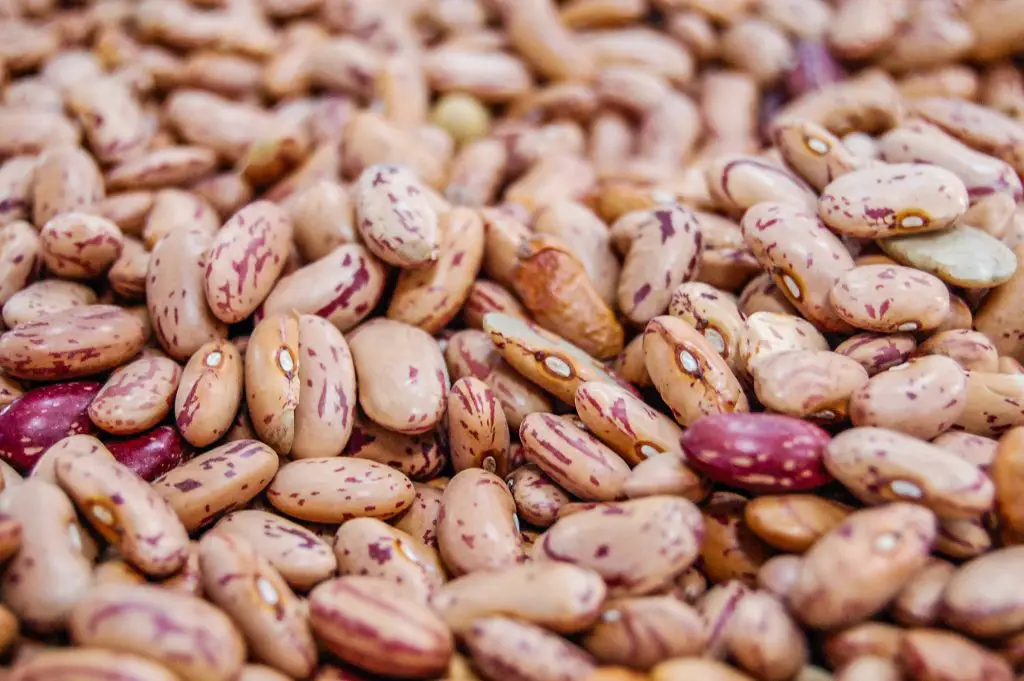Are Bush or Pole Beans Better? Within the family of the common bean, there are almost 14,000 different varieties according to the list compiled by Uli Westphal. However, these can be broadly categorized as Bush or Pole Beans based on their growth habit.
Dwarf Beans grow to a height of around 30 cm (12 inches) whereas Pole Beans require a support structure such as a trellis to grow on. When given the required support the Pole Beans will easily reach a height of 2 metres (6 to 7 ft).
Pole Beans are superior for home gardeners because they generally produce a higher yield than the Bush varieties. Additionally, they take up less space in the garden because the majority of the growth goes skyward. This enables the Beans to be underplanted with other vegetables enabling the garden output to be further increased.
Typically, Pole Beans produce around 6 to 7 lbs grams (2.7 to 3 kg) per plant per season whereas Bush Beans typically produces 3 to 4 lbs grams (1.4 to 1.8 kg) of beans in a season.

Beyond the basic Pole/Bush categorization there are a number of names used to describe the Beans which can confuse some gardeners. Snap Beans, French Beans, and Green Bean all pretty much refer to the same thing, Beans that are harvested to be eaten whole when the pods are relatively immature.
However, they can also be allowed to mature to maximize the size of the bean itself which is often dried for storage. In this case, the pods are discarded as they become tough, stringy, and increasingly inedible with age.
Are There Different Types of Beans That Climb?
Within the group of Beans that climb there are annual varieties which are generally referred to as Pole Beans and there is a second group of perennial plants known as Runner Beans. Runner Beans are also sometimes referred to as the 7-Year Bean because they produce a climbing vine every year before dying back in winter and returning the following season.
Apart from the lifespan of the Runner Bean, the other common feature is the shape of the pod. Runner Beans have a flat broad pod with a relatively rough texture that is generally thicker than the Pole Beans. See the photograph below.

How to Grow Beans
Irrespective of the Bean varieties you chose to grow they are all sensitive to frost and thrive in the warmer months of the year. As such it is best to plant them in spring after the risk of frost has passed. They can be sown directly into the soil at a depth of 2 to 3 cm (1 inch) however, I generally recommend sowing them into modular trays undercover.
The reason for this is that it allows the beans to be started before the last frost, secondly it gives greater protection from pests to the young seedlings. If planted in trays it will take around 4 to 6 weeks before the plants are ready to plant out into the garden.
The cheapest place I have found to purchase Bean seeds online, in the US, is Seeds Now. Seeds Now specialize in Heirloom seeds and offer around 15 different varieties. The advantage of buying Heirloom seeds is that you can save them for the following year. If you live in the UK I would suggest visiting Thompson & Morgan, however, they offer both Heirloom and F1 Hybrid seeds so make sure you purchase heirloom seeds. To learn more about Heirloom Vs F1 Hybrid seeds click here.
When planting them out select a warm sunny spot as they need at least 6 hrs of sun a day. They prefer moist well-drained soil with plenty of organic matter. To prepare the soil we recommend using the No Dig method as it is quick, easy, and reduces the volume of work in the garden significantly.
To apply this approach simply add a relatively thick layer of mulch, 5 to 10 cm (2 to 4 inches) once a year, and plant directly into the layer. The compost will act as a mulch and feed the soil. To learn more about this technique click here.
If you are growing Pole or Runner beans it will be necessary to erect a support structure that is at least 1.8m (6 feet) high. A support structure can be created using bamboo canes or hazel rods, alternative prefabricated structures can be purchased online through Amazon. As the Beans develop it may be necessary to tie them into the structure.

Typically harvesting of Beans will commence 80 to 90 days after the seeds have been sown. It is best to pick the beans and as soon as they are ready as the pods will become tough if they are left too long. Beans should be picked every three to five days as consistent harvesting will also encourage the formation of new flowers. This in turn will extend the growing season.
What Grows Well With Pole Beans?
Pole Beans by the nature of their growth habit and physiology are highly beneficial for other plants. The climbing habit provides an opportunity to underplant them with vegetables that prefer a little shade in the height of summer. Examples of this include crops such as lettuce which have a tendency to bolt when exposed to high temperatures and direct sunlight.
Additionally, Beans increase the amount of available nitrogen in the soil which aids leaf growth for many plants. This is achieved through a symbiotic relationship between the Beans and bacteria found in the soil. This symbiosis occurs when the bacteria takes gaseous nitrogen from the air and feeds it to the beans in exchange for carbohydrates.
An example where both these characteristics are used to good effect is in the Native American agricultural grouping that includes Corn, Beans, and Pumpkin, which is often referred to as the Three Sisters.
The Corn provides a natural trellis for beans to climb on while the Pumpkin provides a ground cover that reduces moisture loss and suppresses weeds. The beans provide additional nitrogen to the soil which benefits all three crops.
This technique is best used when you intend to allow the pods to fully mature rather than pick them as green beans. The reason for this is that it can be a little hard to seed the Beans among all the growth. This makes it more difficult to pick the immature pods at their best.

Variations on the Three Sisters include replacing the Corn with Jerusalem Artichoke or replacing the Pumpkins with Watermelon, Cucumber or Cantaloupe.
Other companion planting options for Pole Beans include Beetroot, Celery, Lettuce, Broccoli, Cabbage, and other cool-season crops which benefit from shade in the late afternoon sun. Tomatoes also benefit from being planted nearby, they also can use the same support structure in some cases. This tends to work best if the Tomatoes are established prior to planting the beans.
Saving Beans Seeds For Next Year
The purchase of Beans seeds should only occur once as it is extremely easy to gather seeds from the following year. Bean seeds can be extracted simply by harvesting the leftover pods as the plant is removed at the end of the season. There are almost always enough old dried-out pods left on the vine that have been missed during the growing season to provide enough seed for the following year.
When harvesting the pods for seed there is no special effort required. Simply grab a handful of pods and place them on a shelf somewhere. The pods will dry out and at that stage, the seeds can be removed, or if you are really lazy, like me just, leave them in the pods until the following year.
However, it is important to note that seed saving can only be done if the seeds is a open pollinated variety. Open-pollinated varieties will have NOT have terms like “F1”, F1 Hybrid or Hybrid in the name. F1 hybrids are genetically unstable seeds that will produce plants that are not “true to type” when the seed is saved. To learn more about the differences between hybrid, open-pollinated, and heirloom seeds click here.
